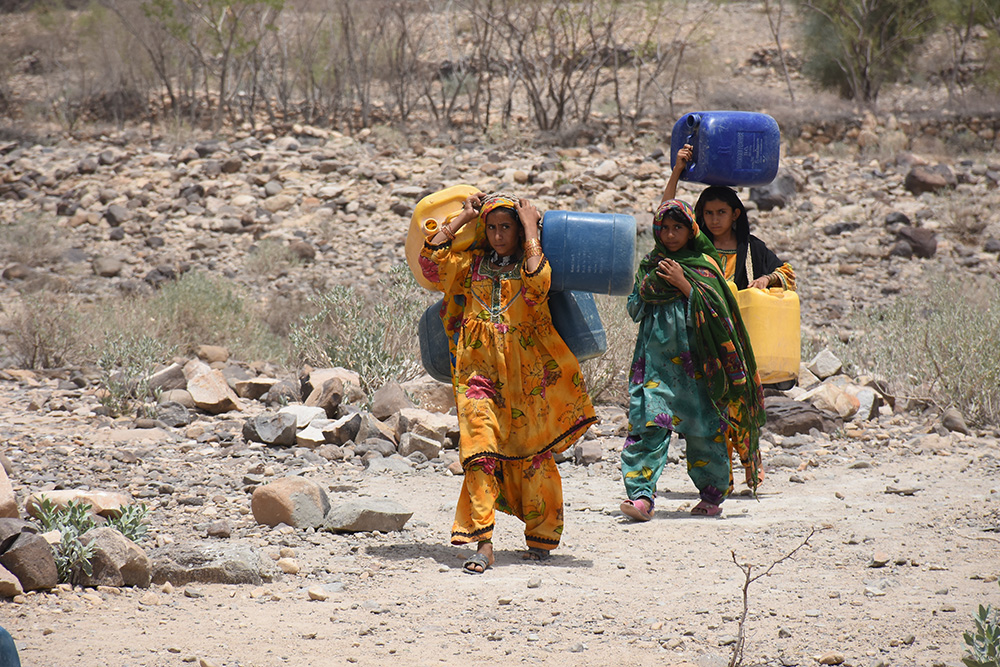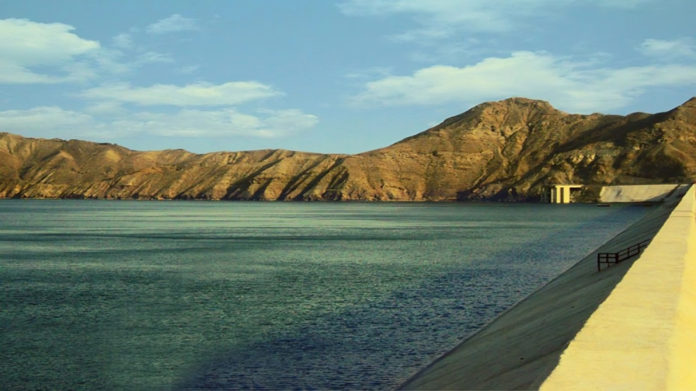For a country blessed with many rivers, the perennial scarcity of water in Pakistan is because of the shortage of storage capacity. While problematic presently, a full blown crisis is not so far in the distant future. While all provinces face shortages of water, Balochistan stands out as the most affected. This looming disaster can be overcome by (1) conserving water and maximizing its effect (2) eliminating, or at least minimizing wastage and (3) apportioning it judiciously on a need-to-have basis.
The little sources of water aside, scanty rainfall in land and resource-rich Balochistan is a harsh and permanent feature. Monsoon rainfall averages less than 200 mm annually, the western parts receiving less than 50mm. Eking out a precarious existence in a badly flawed feudal system, water deprivation adds to the complicating factors feeding militancy. Severe drought and man-made famine adding to the population’s deep-rooted necessity in some areas is because of the govts failure to (1) preserve rain and (2) decreasing groundwater levels caused by deep well pumping. Dr. Ainuddin, chairperson of the Disaster Management Department at the University of Balochistan says that “Noshki, Chaghi, Kharan and Makran, among other areas, are more prone to drought, and it has affected land, water resources, water, wildlife and plants.” The Federal Govt (and even the media) appear not interested even in discussing the problem for solutions. Less than 15% of the population has access to clean free, running water. Alarmingly, Quetta is facing a perilous situation with the water level decreasing three-and-a-half feet every year, the average groundwater level being just 180 feet. Despite being banned deep-dug tube wells numbers exceed 2000, of which only 450 are registered, this is a major factor behind the dropping water level.
Balochistan wasteland comprises of mountainous ranges and deserts in Chagai, Kharan, Mekran coastal region, Lasbela and Marri – Bugti tribal areas. Spread over an area of about 347,000 sq km the land mass is around 43% of Pakistan, why have our planners never seriously wanted to exploit more than 20 million acres of highly fertile land for cultivation and production of crops every year? Owning arable land is the ultimate dream of the human being, the poor downtrodden population of Balochistan can really benefit by becoming truly self-sufficient. Balochistan’s irrigation system is in bad shape, the centuries-old traditional irrigation systems, including Karez (underground water channel linked with open well system) have become dysfunctional owing to depleting groundwater resources. Concerted efforts must be made to tame the floods, build water storage facilities and construct dams, even small ones on a priority basis. The once mega irrigation infrastructure — especially the dams damaged by the floods of 2010 – remains in shambles. The ‘100-dams’ project of the Federal Govt was greatly publicized and accommodated in the Federal PSDP 2007-08, has hit bureaucratic snags.
Specialists and experts are of the view that dams are the only solution to the growing threat of water shortage, drought and famine. Only a handful has been built by successive provincial govts over the years. Consequently, a large amount of water goes to waste while the people thirst and even die for want of this precious commodity. According to the Agriculture Dept of Balochistan, “8.57 bn cubic metres of water out of 10.69 bn cubic metres (almost 80%) is being wasted every year because of the lack of dams. Lack of infrastructure renders water coming from the mighty Indus of little use”, warning that “if this misuse of water continues, the population might have to migrate in near future”.

A model exists next door, Iranian Balochistan solved its water shortage problem by investing in developing water resources, this included building dams. Iran could thus launch its Chahbahar Port and adjoining areas where an industrial complex is being developed. Even Gwadar Port city, the focus of CPEC, faces severe shortage of water, even for drinking and domestic use. Prospects for building dams and water storage facilities in Balochistan are very favourable but after Mirani Dam no new dams or water storage facilities were constructed. Proven to be a failure, funds spent on small check dams is being wasted. The Kachhi Canal taken up during the Musharraf regime would have irrigated more than 0.7 million acres of land in the Kachhi and Sibi Plains when completed but WAPDA is yet to complete the first phase of Kachhi Canal, with construction delayed for more than a quarter of century, it will now cost twenty times more, more or less true of all other water-management projects delayed for no apparent reason but sheer apathy and neglect.
Successive Federal and Provincial govts have remained indifferent to this matter of life and death. The residents of the small coastal town of Pasni faced acute water shortage for over half a century, however once a small dam was built on Shadi Kuar River, the first rains filled its catchment with more than 40,000 acre-feet of water. Similar was the case with the Akra Kaur Dam and Saiji Dam near Gwadar, both adjacent townships are now self-sufficient in drinking water. What the coastline needs are several desalination plants, compare the capital and recurring costs to catchment dams!
The last major dam built in 2002 is the medium-size multi-purpose Mirani Dam located on the Dasht River in Kech District, this also recharges hundreds of major Karez and wells upstream. Supposed to irrigate up to 33,200 acres of land but only a fraction land is being irrigated and developed. WAPDA has recently started making efforts to start work on four dams i.e. Naulong, Hingo, Badinzai and Sukliji. While construction work on Naulong dam would be initiated soon as funding options are thrashed out with Asian Development Bank (ADB), the other three dams were in the planning stages and PC-IIs were awaiting approval from Planning Commission.
CPEC will open up new avenues of economic development for Balochistan. The estimated $7.1 billion initial investments in energy, transport, development of Gwadar city and port notwithstanding, it is vital that not only more dams are constructed on a fast-track basis but Gwadar, Pasni and Ormara must have desalination plants, possibly powered by wind turbines and solar projects. CPEC must not be confined to power projects and road/rail infra-structure, a minimum of 10-12 more dams must be built on a crash basis. The world has stopped building big dams, one can only ignore the province’s potential at the cost of Pakistan’s future. Either we let a 100 dams bloom in Balochistan or we damn its population to water scarcity and starvation.




